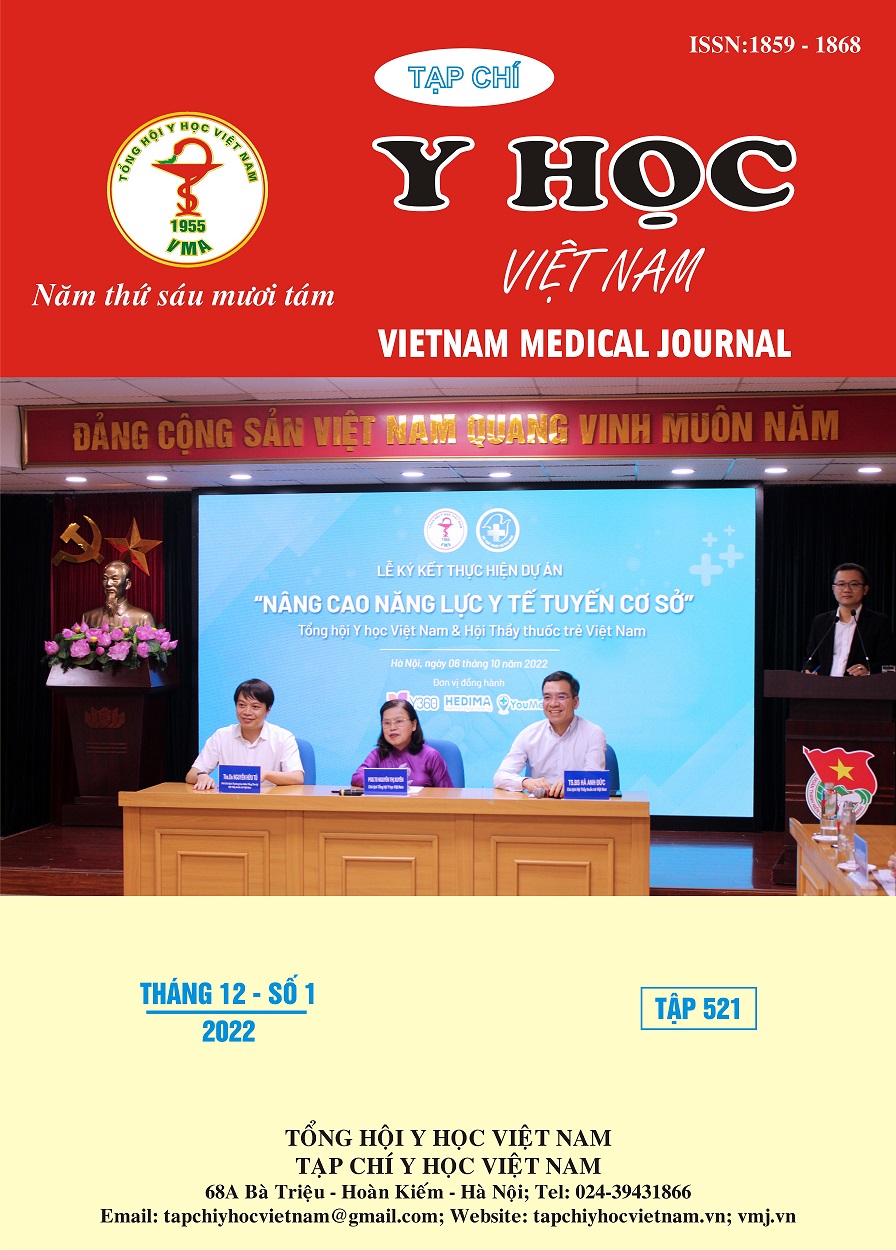FEATURES OF ECTOPIC PREGNANCY AFTER INTRA UTERINE INSEMINATION AND IN VITRO FERTILIZATION TREATMENT IN NATIONAL HOSPITAL OF OBSTETRICS AND GYNECOLOGY
Main Article Content
Abstract
Objectives: To describe the features and treatment of ectopic pregnancy after Intra Uterine Insemination and In Vitro Fertilization treatment in National Hospital of Obstetrics and Gynecology. Materials and methods: A prospective descriptive study of 53 cases ectopic pregnancy after Intra Uterine Insemination and In Vitro Fetilization was operated in National Hospital of Obstetrics and Gynecology from July 2021 to July 2022. Result: 66,7% of patients was transferred two embryos. The rate of frozen embryo is 84,6%. The rates of day-3 embryo and day-5 embryo transferred are 43,6% and 56,4%, respectively. Ectopic pregnancies most frequently occurred in the fallopian tubes (67,9%), then in the interstitial (24,5%). 3,8% cases are bilateral tubal ectopic pregnancy, 28,3% cases are heterotopic pregnancy. 98,1% had laparoscopic surgery, 1,9% was converted to laparotomy. Conclusions: in the cases after in vitro fertilization or intra uterine insemination, it must be pay attention to avoid missing the ectopic pregnancy in the ultrasound, especially the case of heterotopic pregnancy.
Article Details
Keywords
ectopic pregnancy, in vitro fertilization, intra uterine insemination
References
2. Bu Z, Xiong Y, Wang K, Sun Y. Risk factors for ectopic pregnancy in assisted reproductive technology: a 6-year, single-center study. Fertil Steril. 2016;106(1):90-94. doi: 10.1016/ j.fertnstert.2016.02.035
3. Perkins KM, Boulet SL, Kissin DM, Jamieson DJ, National ART Surveillance (NASS) Group. Risk of ectopic pregnancy associated with assisted reproductive technology in the United States, 2001-2011. Obstet Gynecol. 2015; 125(1):70-78. doi:10.1097/AOG.0000000000000584
4. Ishihara O, Kuwahara A, Saitoh H. Frozen-thawed blastocyst transfer reduces ectopic pregnancy risk: an analysis of single embryo transfer cycles in Japan. Fertil Steril. 2011;95(6):1966-1969. doi:10.1016/j.fertnstert.2011.02.015
5. Glujovsky D, Blake D, Farquhar C, Bardach A. Cleavage stage versus blastocyst stage embryo transfer in assisted reproductive technology. Cochrane Database Syst Rev. 2012;(7): CD002118. doi:10.1002/ 14651858. CD002118.pub4
6. Milki AA, Jun SH. Ectopic pregnancy rates with day 3 versus day 5 embryo transfer: a retrospective analysis. BMC Pregnancy Childbirth. 2003;3(1):7. doi:10.1186/1471-2393-3-7
7. Jeon JH, Hwang YI, Shin IH, Park CW, Yang KM, Kim HO. The Risk Factors and Pregnancy Outcomes of 48 Cases of Heterotopic Pregnancy from a Single Center. J Korean Med Sci. 2016;31(7):1094-1099. doi:10.3346/jkms.2016.31.7.1094
8. Solangon SA, Otify M, Gaughran J, Holland T, Ross J, Jurkovic D. The risk of miscarriage following surgical treatment of heterotopic extrauterine pregnancies. Hum Reprod Open. 2022;2022(1):hoab046. doi:10.1093/hropen/hoab046


